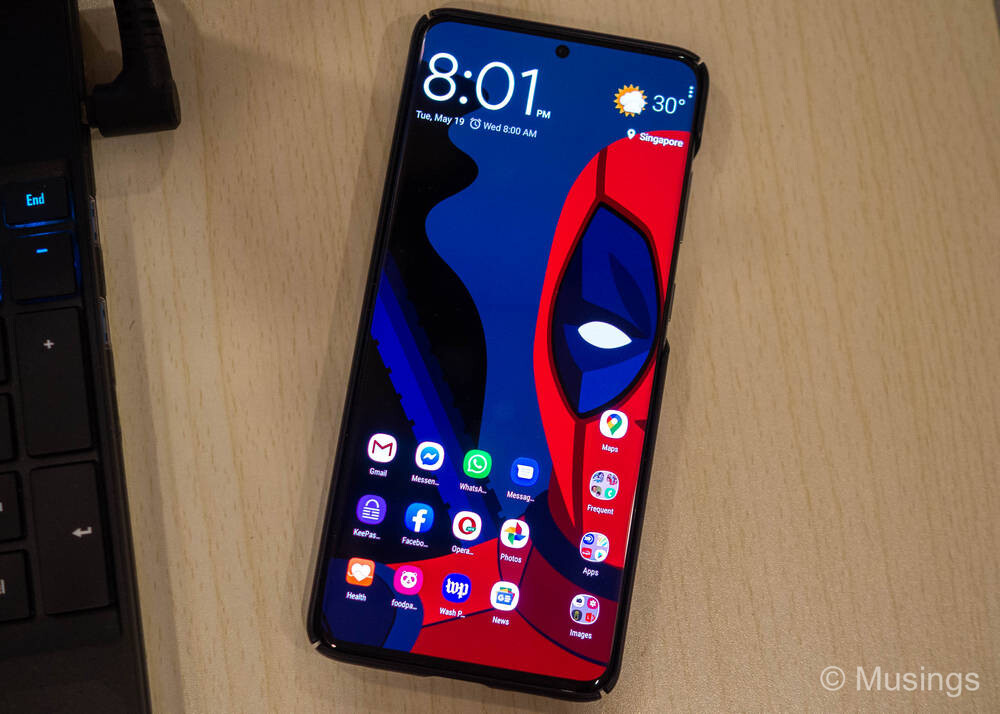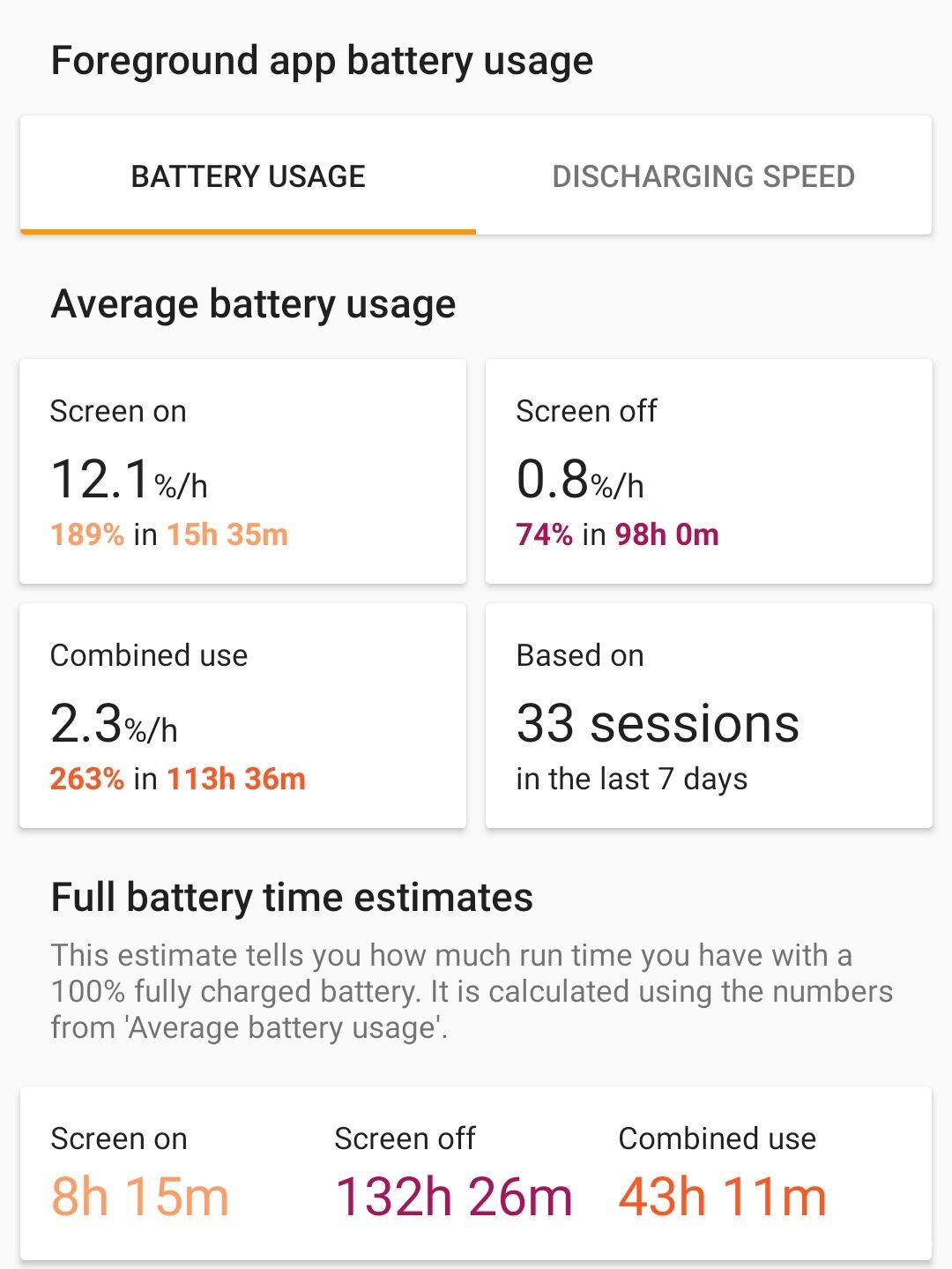Continued from the last post!
It wasn’t an easy decision whether to go with the Samsung Galaxy S20+, the OnePlus 8 Pro, or the Xiaomi Mi 10 Pro. But there were a few factors that swayed my decision:
Importantly, the S20+ Snapdragon variant is the cheapest of these three models. It isn’t usually like this: the Snapdragon version of the S20+ is normally listed at the same price as the OnePlus, which would have made it silly not to go with the latter. After all, the 8 Pro is technically superior to the S20+ in several technical aspects, e.g. its support for 120Hz at the highest QHD+ resolution, a slightly larger screen, and its beefier battery. Heck; aside from international availability, there’s little the S20+ does better than the 8 Pro. The price difference at the Shopee listing however is huge: I paid SGD1,019 after applying the Shopee discount for the phone – that’s more than SGD350 cheaper compared to the SGD1,398 for the 8 Pro. The price with the Mi 10 Pro was closer to the S20+ – roughly around SGD150 more expensive or so – but what I’d be getting reseller warranty with the S20+, while the reseller bringing in the Chinese variant of the Mi 10 Pro was offering little such. Sure, it’s not manufacturer warranty for the S20+, but something is better than nothing.
One thing the Oppo Reno 10x zoom offers is a mostly flat display screen. I’m not a fan of phones with curved edges, and all three phone replacements I considered have this so-called ‘feature’. But the S20+’s display has the most gentle curve of the three. And significantly, the Mi 10 Pro was only supporting 90Hz refresh, while the S20+ would be 120Hz rated.
And finally, of the three phones, the S20+ is widely sold here, albeit the Exynos variant. Both variants are physically identical and can use the same accessories. There are a lot of phone cases available in local shops for it, and somewhat less so for the other two phones. There are a few, but I’d have to ship from abroad cases for the Mi 10 Pro or 8 Pro.

So, a week after using the phone, here are my first impressions of the Samsung Galaxy S20+ 5G!
The phones I’ve had as my main drivers in the last ten years have been growing incrementally larger and heavier each time. The Oppo Reno 10x Zoom was the heftiest and largest phone I’ve used, barring perhaps the Mi Max. The Mi Max was much larger though oddly slightly lighter – but that was never my daily go-to-phone. So, it’s quite nice to actually pick a new phone this time that bucks that trend. The S20+ in hand feels significantly lighter at 188g vs the Oppo’s 215g, and smaller in all three dimensions – height, width and thickness – in comparison too. The S20+’s display, on paper, is slightly larger at 6.7” compared to the Oppo’s 6.6”. In practice though, the screen feels smaller because the display on the S20+ is also less wide by quite a bit.
Unlike the Oppo Reno, the Samsung S20 flagships all feature the punch hole camera design, and the small hole sits squarely at the center at the top of the display. I’m neutral about pop-up cameras themselves. And to be fair, the S20’s punch hole itself isn’t actually too obvious: I don’t really notice it in normal use. The more serious consequence of Samsung’s implementation though is that the top half-cm of the display has been rendered unusable altogether by many apps. Oh, there’s the option to enable full screen displays for Netflix, but there is no such for browser apps or home screen widgets. The notification bar now sits permanently for Opera Mini – true full-screen browsing was possible on the Oppo Reno – and widgets on the S20+ end where the notification bar is now too. Bummer. I reckon this is finally a matter of whether Samsung’s OneUI will allow apps to make use of the notification bar area – i.e. it can be implemented via updates – but I’m not hopeful.
The highlight of the S20+ for me, and the singularly most important reason why I picked it up, is its 120Hz screen refresh rate. The S20+ isn’t actually my first handheld gadget with a higher than 60Hz refresh of course: my iPad Pro 11 has its ‘ProMotion’ display that also uses 120Hz refreshes. And the S20+’s display refresh doesn’t disappoint at all. I’m not a smartphone gamer, and that few games support 120Hz refresh rates doesn’t bother me. Outside that, general navigation, web scrolling, tinkering around in Settings etc. all feel pleasingly fluid and responsive. Unlike the OnePlus 8 Pro, the S20+ doesn’t support the 120Hz refresh rate at the higher QHD+ resolution the phone is otherwise capable of. The general belief among owners is that this is something that Samsung can enable if they want to. But I honestly won’t miss it even if they don’t ever. Besides the expected massive hit on the battery for the phone to run 120Hz at QHD+, the S20+’s display already looks reasonably crisp at 1080p.
That said, the 120Hz display at FHD resolution does in itself already result in a significant hit on battery life. The S20+ has a beefy 4,500mAh battery – larger than the Oppo’s 4,065mAh. But I was regularly getting just over 10+ hrs of Screen-On-Time on the Oppo Reno, even after nearly a year of use and the resulting battery wear from constant charging. On the S20+, it’s 8 hrs – and that’s with normal use (i.e. non-gaming) and with the Always-On-Display enabled, and on Optimized Power Saving mode. I haven’t yet done a test to see how much additional battery I’d get if I switched back to 60Hz, but 6 hrs is still enough for a full day of normal use. Like most of Samsung other flagships and also mid-rangers, the S20+ supports wireless charging: something I sorely missed on the Oppo Reno over the period it was my daily driver.

Oddly, despite the S20+’s technology being around 9 months potentially newer than the Oppo Reno, unlocking and getting into the phone is consistently clumsier. The under display thumbprint scanner takes way more effort: the phone sometimes reminds me to press the scan area hard to get a good scan, and the face unlock likewise also fails with more frequency. One would have thought that the Oppo Reno with its sharkfin pop-up camera and mechanical moving parts would face unlock slower, but the opposite has proven to be true. Still, I get to use pattern unlock again on the S20+ – the Oppo Reno didn’t have that.
My particular variant of the phone is the 12GB RAM/128GB storage one. Basically, more RAM than I’d ever need – phones are coming to the point where the amount of RAM it has exceeds that of laptops even – but less storage space, compared to the Oppo Reno’s 256GB. Thankfully, in normal day to day use, I rarely use more than 40-50GB to hold all my apps, documents and also several hundred MP3 and video files – so 128GB is still plenty. Things will be quite different though when I bring the phone out of the country on vacation: I’d almost for certain need to drop a 256GB MicroSD card into the S20+. This variant also isn’t dual-SIM. I did think hard about whether this omission would be seriously debilitating, but concluded that it wouldn’t be, even when I’m traveling. I’ve always used local SIM cards in the last couple of years whenever I travel, and my work colleagues invariably WhatsApp call or message these days anyway.
Continued in the next post, and with some sample pictures!
Recent comments